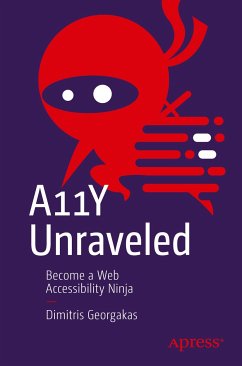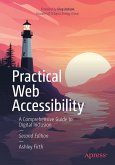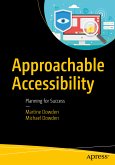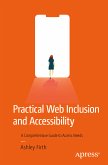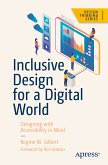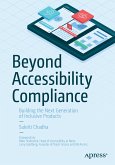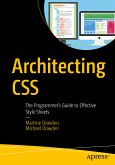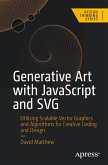Make designing and developing accessible websites fun and straightforward by deciphering information that is often confusing. This book examines how web professionals can ensure a website is as accessible as it can be, meeting the needs of its audience.
The main focus is on web accessibility and, WCAG 2.1 and 2.2 guidelines: what they are, who they are for, and what can be done from a design point of view to make the lives of the users easier. In reviewing the fundamentals, emphasis will be given on what disabilities could potentially prevent users from getting the information they need and what can be done to help them. This is achieved by breaking down web design and development terms and practices, such as web accessibility, color contrast, typography, how to design specific components like carousels, forms, and so on.
Each chapter features design examples presented in a clear and concise manner. Each design element is divided into different components, highlighting exactly what helps with what, showing how a website needs to be designed for the benefit of its people. A11Y Unraveled also reviews the current laws and legislations that govern web accessibility in different parts of the world.
You will:
The main focus is on web accessibility and, WCAG 2.1 and 2.2 guidelines: what they are, who they are for, and what can be done from a design point of view to make the lives of the users easier. In reviewing the fundamentals, emphasis will be given on what disabilities could potentially prevent users from getting the information they need and what can be done to help them. This is achieved by breaking down web design and development terms and practices, such as web accessibility, color contrast, typography, how to design specific components like carousels, forms, and so on.
Each chapter features design examples presented in a clear and concise manner. Each design element is divided into different components, highlighting exactly what helps with what, showing how a website needs to be designed for the benefit of its people. A11Y Unraveled also reviews the current laws and legislations that govern web accessibility in different parts of the world.
You will:
- Learn how people perceive information on the web, and how that might create barriers in communication. Review different disabilities or limitations that prevent users from accessing web information and how to address them.
- Design an accessible website for specific disabilities through practical examples.
- Understand how different web design components affect the user. Study current web accessibility legislation, avoiding difficult to understand lingo.
Dieser Download kann aus rechtlichen Gründen nur mit Rechnungsadresse in A, B, BG, CY, CZ, D, DK, EW, E, FIN, F, GR, HR, H, IRL, I, LT, L, LR, M, NL, PL, P, R, S, SLO, SK ausgeliefert werden.
Es gelten unsere Allgemeinen Geschäftsbedingungen: www.buecher.de/agb
Impressum
www.buecher.de ist ein Internetauftritt der buecher.de internetstores GmbH
Geschäftsführung: Monica Sawhney | Roland Kölbl | Günter Hilger
Sitz der Gesellschaft: Batheyer Straße 115 - 117, 58099 Hagen
Postanschrift: Bürgermeister-Wegele-Str. 12, 86167 Augsburg
Amtsgericht Hagen HRB 13257
Steuernummer: 321/5800/1497
USt-IdNr: DE450055826
Bitte wählen Sie Ihr Anliegen aus.
Rechnungen
Retourenschein anfordern
Bestellstatus
Storno

